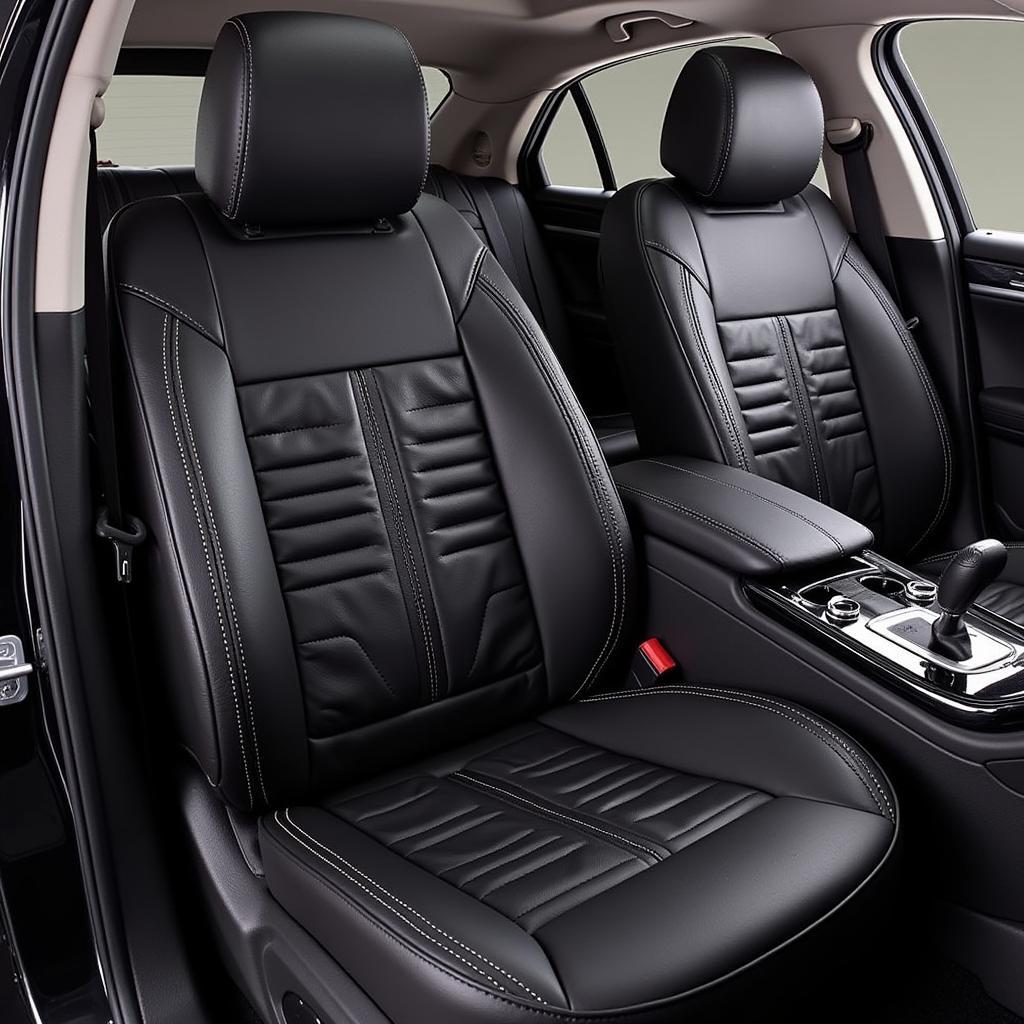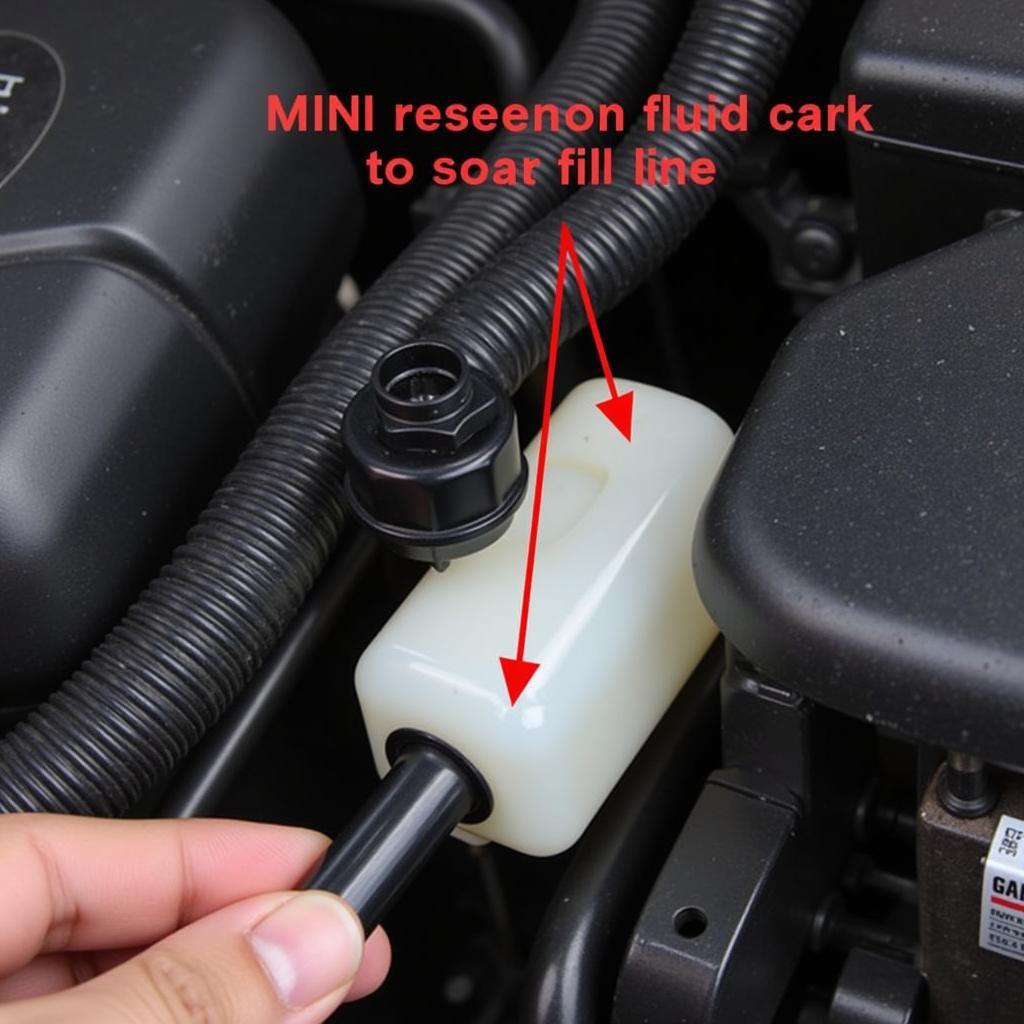Are you concerned about the potential link between auto drive seat covers and cancer? The internet is awash with information, but it can be difficult to discern truth from rumor. This article dives deep into the topic, examining the science behind these claims and providing expert advice to help you make informed decisions about your car’s interior.
Understanding the Cancer Concerns Surrounding Auto Drive Seat Covers
The primary concern revolves around volatile organic compounds (VOCs), which are chemicals released from certain materials, including some synthetic leathers and plastics used in seat covers. These VOCs can off-gas, meaning they are released into the air you breathe inside your car. While some VOCs are known carcinogens, meaning they can cause cancer, it’s important to understand the context and levels of exposure.
Are All Auto Drive Seat Covers Dangerous?
No, not all auto drive seat covers pose a cancer risk. The potential danger lies primarily in low-quality, cheaply manufactured seat covers that use materials with high VOC content. Reputable manufacturers often utilize materials that are low-VOC or VOC-free. It’s crucial to choose seat covers made from high-quality materials and to look for certifications that indicate low VOC emissions.
High-quality leather and cloth seat covers are generally considered safe. However, even with these materials, certain treatments and dyes can contain VOCs. Always check with the manufacturer for details about the materials and manufacturing processes used.
“When selecting seat covers, prioritize quality and transparency. Look for manufacturers who openly disclose the materials they use and provide certifications for low VOC emissions,” advises Dr. Emily Carter, a materials scientist specializing in automotive interiors.
How to Choose Safe Auto Drive Seat Covers
Choosing safe auto drive seat covers requires careful consideration of several factors. Here’s a step-by-step guide to help you make informed choices:
- Research Materials: Look for seat covers made from natural materials like leather or high-quality synthetic materials with low VOC emissions.
- Check for Certifications: Look for certifications like Greenguard or OEKO-TEX, which indicate that the product has been tested for harmful substances, including VOCs.
- Choose Reputable Brands: Opt for well-known and trusted brands with a track record of producing safe and high-quality products.
- Read Reviews: See what other customers say about the seat covers, particularly regarding any off-gassing or unusual smells.
- Air Out Your Car: Even with low-VOC seat covers, it’s a good idea to air out your car regularly, especially after installation.
What About “New Car Smell”?
That “new car smell” so many people associate with a new vehicle is actually caused by VOCs off-gassing from various interior components, including plastics, adhesives, and even the seats themselves. While this smell typically dissipates over time, it’s a good reminder of the presence of these chemicals.
 Airing out car interior to reduce VOCs
Airing out car interior to reduce VOCs
Debunking Myths about Auto Drive Seat Covers and Cancer
While concerns about VOCs are legitimate, it’s important to debunk some myths surrounding auto drive seat covers and cancer:
- Myth: All auto drive seat covers cause cancer. Fact: Only certain low-quality seat covers made with high-VOC materials pose a potential risk.
- Myth: The smell of new seat covers is always dangerous. Fact: While the smell can indicate the presence of VOCs, the level of risk depends on the type and concentration of the chemicals.
- Myth: You can’t do anything to mitigate the risk. Fact: Choosing high-quality seat covers and airing out your car can significantly reduce your exposure to VOCs.
“The key to minimizing risk is informed decision-making. Understand the materials used in the manufacturing process and prioritize quality over price,” says Dr. Michael Chen, an environmental health specialist.
 High-Quality Leather Auto Drive Seat Covers
High-Quality Leather Auto Drive Seat Covers
Conclusion
Concerns about auto drive seat covers and cancer are valid, but the risk can be mitigated by choosing high-quality materials and reputable manufacturers. By following the guidelines provided in this article, you can enjoy the comfort and protection of seat covers without compromising your health. Remember to prioritize quality, research materials, and always air out your car to reduce VOC exposure. Don’t hesitate to contact manufacturers directly to inquire about their materials and manufacturing processes.
FAQ
- Are leather seat covers safer than synthetic ones? Generally, yes, as long as they are not treated with harmful chemicals.
- How can I tell if my seat covers are off-gassing VOCs? A strong chemical smell is often an indicator.
- Do all new cars have high VOC levels? New cars typically have higher VOC levels, but they dissipate over time.
- What are some safe materials for auto drive seat covers? Leather, high-quality cloth, and certain synthetic materials with low VOC emissions are good choices.
- Should I avoid seat covers altogether? No, not necessarily. Choosing high-quality seat covers can provide protection and comfort without significant risk.
- How long should I air out my car after installing new seat covers? Several hours, or even days, depending on the materials and the intensity of the smell.
- Where can I find more information about VOCs in car interiors? The Environmental Protection Agency (EPA) and other environmental organizations offer valuable resources.

